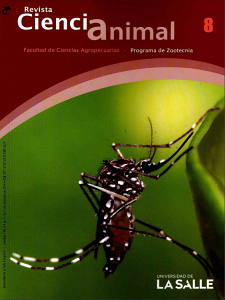Abstract
The paper presents the productive evaluation of different associations of grasses (Holcus lanatus and Dactylis glomerata) and legumes (Trifolium pratense, Trifolium repens, and Lotus corniculatus) at the Chimangual farm (University of Nariño) under a design of completely randomized blocks with eight treatments: T1 (H. lanatus), T2 (H. lanatus + L. corniculatus), T3 (H. lanatus + T. pratense), T4 (H. lanatus + T. repens), T5 (D. glomerata), T6 (D. glomerata + L. corniculatus), T7 (D. glomerata + T. pratense), T8 (D. glomerata + T. repens) and four replicates. An analysis of variance with Duncan’s mean comparison test was applied. The production of fresh biomass was better in T1: 15.14, and in T3: 14.73 t/FV/ha/cutting; and that of dry biomass in T4: 2.75 ton/MS/ha/cutting (p < 0.05). Regarding the height of the grass and the rate of growth, the best results were found in T4: 60.5 cm and 7.9 cm/week, and in T5: 60.410 cm and 7.95 cm/ week, respectively. Regarding the leaf area index, the highest value was observed in the T3 treatment block, with 10.78. Forage coverage was better in T4: 96.69%, and in T3: 94.46%. All treatments were highly profitable; a marked superiority was found in legume associations with H. lanatus in the T3 and T4 treatment blocks. Nevertheless, L. corniculatus resulted in higher costs of implementation. The higher productivity of these associations occurred because these species are established and adapted to the conditions in the area.Downloads
Download data is not yet available.



